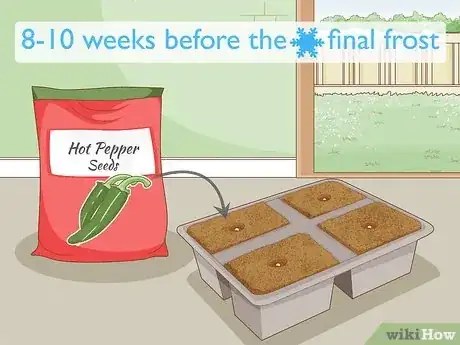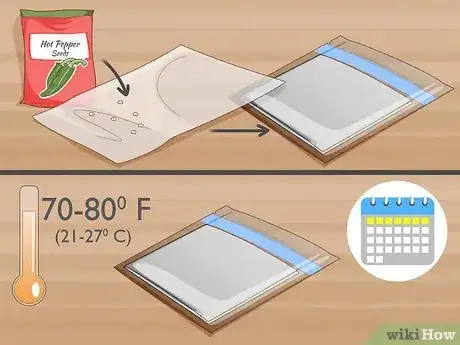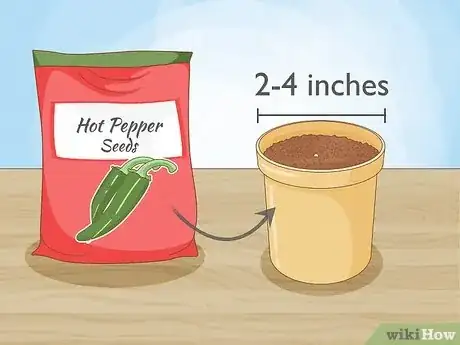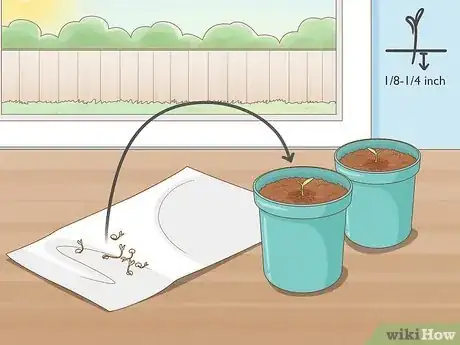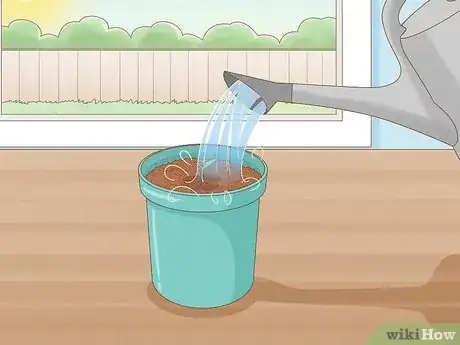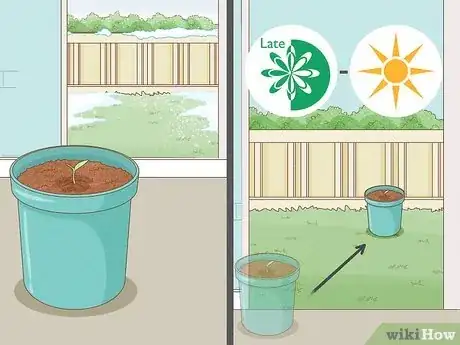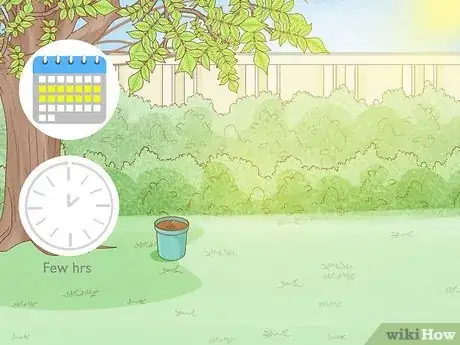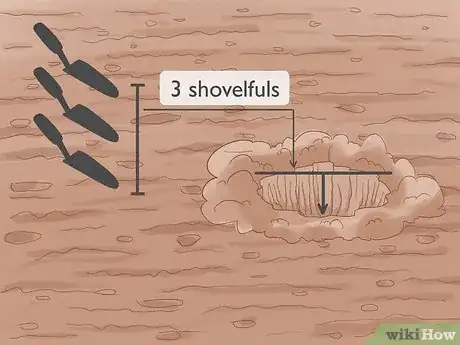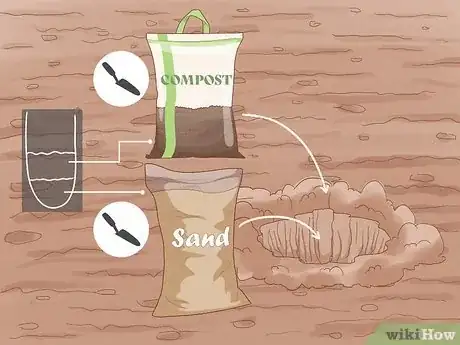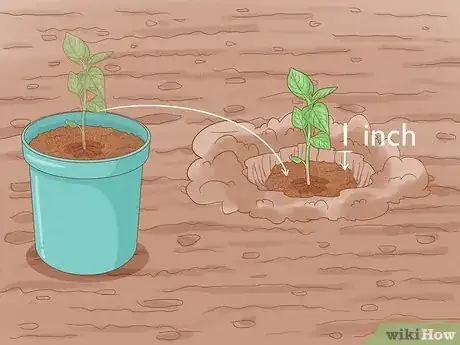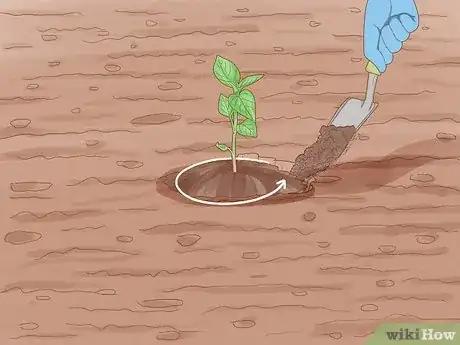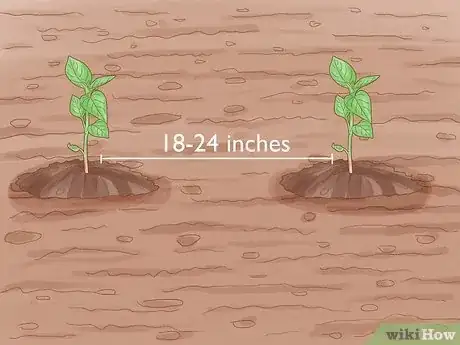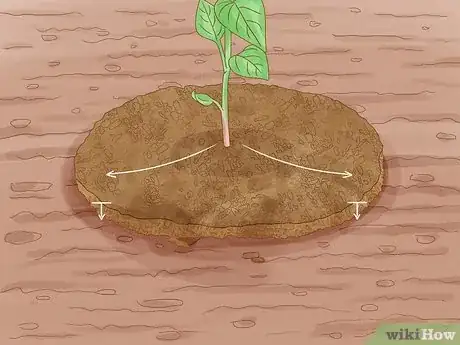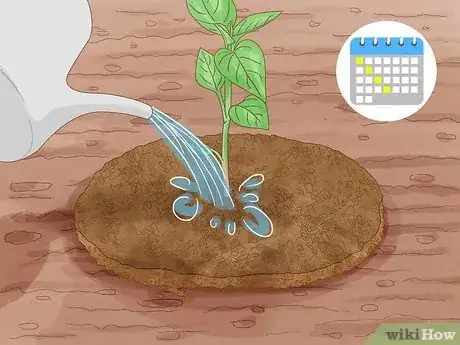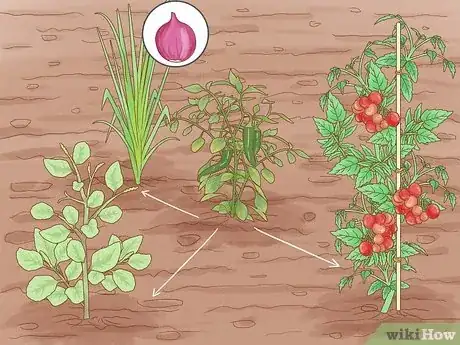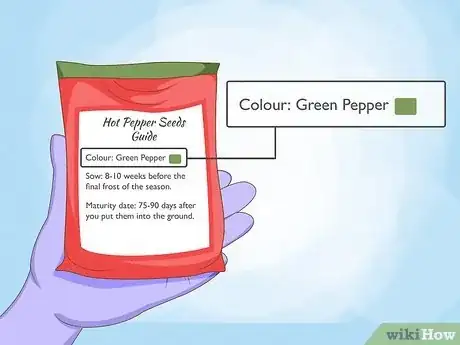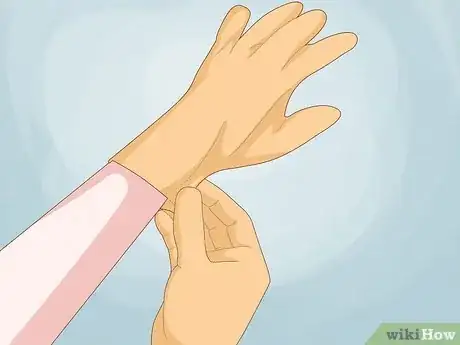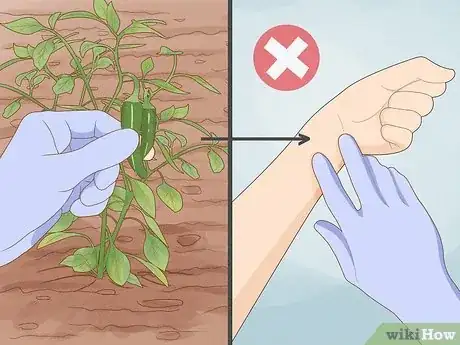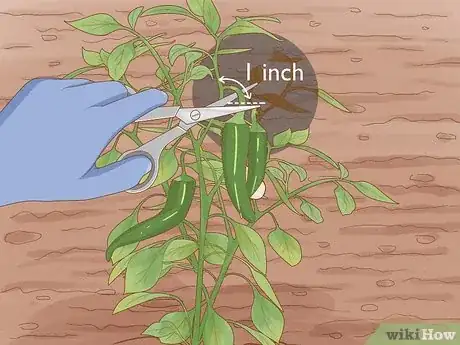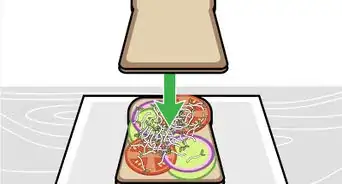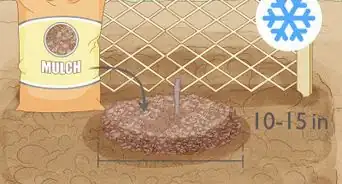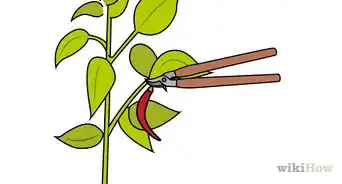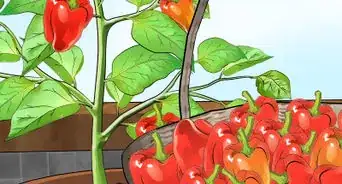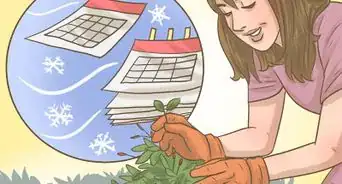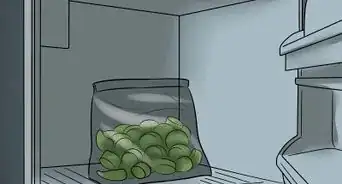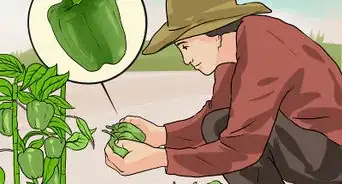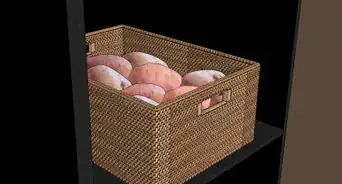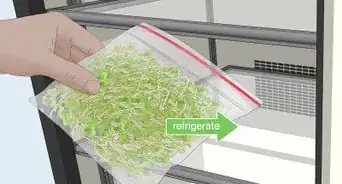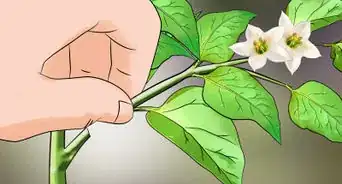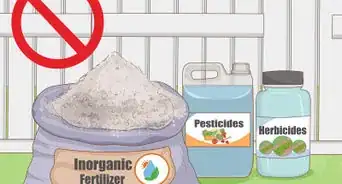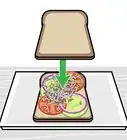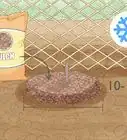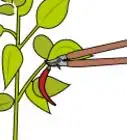This article was co-authored by Lauren Kurtz. Lauren Kurtz is a Naturalist and Horticultural Specialist. Lauren has worked for Aurora, Colorado managing the Water-Wise Garden at Aurora Municipal Center for the Water Conservation Department. She earned a BA in Environmental and Sustainability Studies from Western Michigan University in 2014.
There are 9 references cited in this article, which can be found at the bottom of the page.
This article has been viewed 111,818 times.
There are many types of hot peppers, with varying degrees of heat. They are used to add a kick to recipes like sauces and salsas. With so many hot pepper varieties available, you might want to consider growing your own. With a knowledge of the needs of hot pepper plants, learning how to grow hot peppers can be an easy and fascinating planting project.
Steps
Germinating Pepper Seeds
-
1Begin the process 8-10 weeks before the final frost of the season. Except in some hot climates, pepper seeds won’t grow properly if you plant them directly into the garden soil. They need to grow for a while indoors in a controlled environment.[1]
- The timeline of this varies, because the end of winter can be tricky to predict. Expect to start the seeds around the end of January or the beginning of February.
- If your area has especially mild winters, or you live in a warm climate, you have more freedom when it comes to when you must start the plants.
-
2Start the seeds with wet paper towels and a zipper bag. Fold 2 paper towels separately into small squares. Wet the paper towels with room temperature water. Place the seed on 1 paper towel and lay the other towel on top of that. Grab a zipper bag and slide the wet towels with the seed into it. Store the bag inside at a temperature around 70 to 80 °F (21 to 27 °C), and the seeds should sprout in about 1 week’s time.[2]
- This provides an incubator-like environment for the seed to start growing.
- If your house is not quite warm enough, consider keeping a heat lamp on the seed bag.
Advertisement -
3Place seeds directly into 2 or 4 in (5.1 or 10.2 cm) pots as an alternative. Keep the soil consistently moist but not over saturated. Use a seedling mat to keep the soil warm and encourage faster germination and growth. Transplant the peppers into a larger pot or outdoors when your pepper is at least 6 to 8 inches (15 to 20 cm) tall.
-
4Plant the sprout in a 4 in (10 cm) pot if you used the bag method. If you started the seeds in a paper towel, you can transfer the seed to a pot with good drainage when they have sprouted. Put the seedling about 1⁄8 to 1⁄4 inch (3.2 to 6.4 mm) under the soil. Use organic soil, or soil that’s meant for seed-starting. Also make sure the bottom of the pot has drainage holes.
- Keep the plant in the pot until it grows about 8 to 12 inches (20 to 30 cm) tall.
-
5Water the plant as needed. Peppers soak up a lot of water, but they don’t like soaking wet soil. Check the soil daily to make sure that it’s moist. If the top of the soil has crusted over, the plant needs water. Water it lightly and check it again later to see how moist the soil is.
- A soil moisture meter is a great help in keeping the soil moisture regulated.
-
6Keep the plant indoors until you are sure the winter is over. Continue to nurture the baby pepper plant until it reaches late spring or summer in your area. Peppers only grow in warm weather, so if there is a chance of cold or frost, keep it inside a little longer.[3]
- When it seems like spring and it’s been two weeks since the last frost, it’s probably safe to move the plants outside.
Transplanting Pepper Plants to the Garden
-
1Place the plants outside in indirect sunlight for a few hours a day. Your pepper plants may not survive if you move them from the protected inside to harsh, all-day sunlight. Spend a couple more weeks setting them outside in indirect sunlight for brief periods during the day.[4]
- It may be best to choose hours in the morning or late afternoon, rather than during the hottest hours.
- Over the course of the 2 weeks, leave them out for a little bit longer each day. On the last day you do this, leave the plant out for about 8 hours.
- Avoid leaving young peppers out overnight until they are fully hardened off after a few weeks of increasing the time they spend outside.
-
2Dig a hole for each plant that’s about 3 shovelfuls deep. This is not really an exact amount, but not every plant or garden is the same. If you make the hole about the size of three good shovelfuls, you’ll have room to add some sand and compost, as well as put the plant in.
- Dig 1 hole at a time and follow the next steps. Then you can judge if the hole was big enough for your plant or if you need to make the following ones bigger.
-
3Pour some sand and compost or manure in the planting hole. Since peppers started out in tropical climates, they thrive in sandy soil. Put 1 shovelful of sand into the hole, followed by 1 shovelful of compost or manure.[5]
- Level the sand and compost out and pack them down just a bit.
-
4Set the plant into the hole. After the sand and compost are in the hole, gently pull the pepper plant from the pot. Place it into the hole carefully so that it stands up straight. Ideally, the top of the soil that’s attached to the plant should be about 1 inch (2.5 cm) below the top of the hole.
-
5Fill the hole around the plant’s roots. Use the extra dirt from when you dug the holes to fill in around the plants. Pack the soil down nice and tight so it is pressed against the roots and soil that was on the roots.
-
6Bury the pepper plants 18 to 24 in (46 to 61 cm) apart in the same row. As the pepper plants continue to grow, they will spread their leaves out. Because of this, it’s important to plant them far enough apart for them to expand.[6]
-
7Make the rows 24 to 36 inches (61 to 91 cm) apart. Each row needs to be far enough from the one next to it so the plants can expand on both sides and give you room to walk through. You’ll want about 1 foot (0.30 m) of walking room between the rows, so be sure to leave enough room.[7]
- It’s better to put them farther apart rather than too close.
- Check recommendations for the specific variety of pepper that you are planting. Some benefit from closer spacing.
-
8Give the plants a thorough watering. Soak the soil all around the plants so the soil from the plants combines with what you added around the roots. There’s a danger of overwatering, so pay attention that the ground doesn’t become soggy. Transfer the soil moisture meter to your garden.[8]
Maintaining Your Plants
-
1Lay a thick layer of mulch around the base of the plants. Pepper plants want evenly moisturized soil, which can be hard to maintain. To keep the water in the soil from evaporating, pack mulch, such as weed-free straw, around the base of the plants. Mulch protects the soil from the sun and helps the soil store moisture better.[9]
-
2Water the pepper plants consistently in the morning. Hot pepper plants are thirsty and require a good amount of water. At the same time, you don’t want to overwater them so the soil is soaking. Water them deeply every 5 to 7 days.[10]
- Check the soil moisture meter every day to see if you need to water the plants more often.
-
3Grow companion plants around your peppers. Some plants help peppers grow better and keep insects away from them. Grow onions, basil, and chives to deter insects like aphids, slugs, and mosquitoes that harm your peppers. Plant tomatoes and corn to give your pepper plants shade and create a windbreak.[11]
Harvesting the Peppers
-
1Harvest your peppers at the earliest “maturity” date on the seed packet. Most seed packets list a date when the plants are considered mature and are ready to be picked. If you harvest the peppers at the earliest date listed, the plant yields more peppers.[12]
- A general guide is 75-90 days after you put them into the ground.
-
2Pay attention to the color of the peppers. Most pepper varieties have a color range that tells you when they are ready to pick. Look at the seed packet to see what color the peppers shown are. The packet might also list what color the peppers should be at peak ripeness.
-
3Wear gloves any time you touch the peppers. The oils in the pepper are what make it so hot. Some peppers will actually burn your skin if you are not careful. When it comes time to pick your peppers, wear thick gloves to keep the oil from getting on your skin.[13]
-
4Avoid touching your skin after you touch the peppers. Even wearing gloves, you are at a risk for transferring the pepper oil to your skin. Make sure that you don’t rub the gloves on your skin, especially anywhere on your face or around your eyes.[14]
-
5Cut the peppers from their plant leaving part of the stem. Pulling peppers off of the plant can break the stalk. It’s best to use garden shears or a sharp knife to cut the peppers off. Leave about 1 inch (2.5 cm) of stem on the pepper when you cut it off.
Expert Q&A
-
QuestionCan you grow hot peppers indoors?
 Lauren KurtzLauren Kurtz is a Naturalist and Horticultural Specialist. Lauren has worked for Aurora, Colorado managing the Water-Wise Garden at Aurora Municipal Center for the Water Conservation Department. She earned a BA in Environmental and Sustainability Studies from Western Michigan University in 2014.
Lauren KurtzLauren Kurtz is a Naturalist and Horticultural Specialist. Lauren has worked for Aurora, Colorado managing the Water-Wise Garden at Aurora Municipal Center for the Water Conservation Department. She earned a BA in Environmental and Sustainability Studies from Western Michigan University in 2014.
Professional Gardener Hot peppers will grow best outdoors in full sun but can be grown indoors with the proper light and temperature conditions.
Hot peppers will grow best outdoors in full sun but can be grown indoors with the proper light and temperature conditions. -
QuestionWhat would be the best fertilizer for me to apply to hot peppers?
 Lauren KurtzLauren Kurtz is a Naturalist and Horticultural Specialist. Lauren has worked for Aurora, Colorado managing the Water-Wise Garden at Aurora Municipal Center for the Water Conservation Department. She earned a BA in Environmental and Sustainability Studies from Western Michigan University in 2014.
Lauren KurtzLauren Kurtz is a Naturalist and Horticultural Specialist. Lauren has worked for Aurora, Colorado managing the Water-Wise Garden at Aurora Municipal Center for the Water Conservation Department. She earned a BA in Environmental and Sustainability Studies from Western Michigan University in 2014.
Professional Gardener When your pepper is young, before flowering, water with a equally balanced fertilizer such as 10-10-10, like a seaweed or fish emulsion. Fertilize once or twice a month. Switch to a fertilizer low in nitrogen and high in phosphorus when the plant is flowering and fruiting.
When your pepper is young, before flowering, water with a equally balanced fertilizer such as 10-10-10, like a seaweed or fish emulsion. Fertilize once or twice a month. Switch to a fertilizer low in nitrogen and high in phosphorus when the plant is flowering and fruiting. -
QuestionDo you need to prune leaves at bottom of the stem?
 Lauren KurtzLauren Kurtz is a Naturalist and Horticultural Specialist. Lauren has worked for Aurora, Colorado managing the Water-Wise Garden at Aurora Municipal Center for the Water Conservation Department. She earned a BA in Environmental and Sustainability Studies from Western Michigan University in 2014.
Lauren KurtzLauren Kurtz is a Naturalist and Horticultural Specialist. Lauren has worked for Aurora, Colorado managing the Water-Wise Garden at Aurora Municipal Center for the Water Conservation Department. She earned a BA in Environmental and Sustainability Studies from Western Michigan University in 2014.
Professional Gardener This isn’t required but can help your plant focus energy to fruit bearing branches. It will also encourage growth.
This isn’t required but can help your plant focus energy to fruit bearing branches. It will also encourage growth.
Things You'll Need
- Hot Pepper Seeds
- Paper towels
- Plastic zipper bags
- 4 in (10 cm) planting pot with drainage
- Heat lamp (optional)
- Shovel
- Mulch
- Gloves
- Shears or knife
References
- ↑ http://www.gardenersnet.com/vegetable/hotpeppers.htm
- ↑ http://www.burpee.com/gardenadvicecenter/areas-of-interest/seed-starting/growing-peppers/article10252.html
- ↑ http://www.vegetablegardeningideas.com/vegetable-growing-instructions/how-to-grow-hot-peppers/
- ↑ https://pepperjoe.com/pages/gardening-tips-transplanting
- ↑ https://pepperjoe.com/pages/gardening-tips-transplanting
- ↑ http://www.gardenersnet.com/vegetable/hotpeppers.htm
- ↑ https://www.gardenweb.com/discussions/2766388/when-and-how-should-i-transplant-pepper-plants
- ↑ https://www.gardenweb.com/discussions/2766388/when-and-how-should-i-transplant-pepper-plants
- ↑ http://www.weekendgardener.net/blog/2010/04/grow-the-best-peppers.htm
- ↑ https://www.gardenweb.com/discussions/2766388/when-and-how-should-i-transplant-pepper-plants
- ↑ https://www.treehugger.com/lawn-garden/companion-plants-grow-your-peppers.html
- ↑ https://www.gardenweb.com/discussions/2766390/harvesting-when-are-my-peppers-ready-to-pick
- ↑ http://adequateman.deadspin.com/you-should-wear-gloves-while-working-with-hot-peppers-1784270616
- ↑ http://www.vegetablegardeningideas.com/vegetable-growing-instructions/how-to-grow-hot-peppers/
About This Article
To grow hot peppers, start by germinating pepper seeds indoors 8-10 weeks before the last expected frost. To germinate the seeds, sandwich them between 2 wet paper towels and place them in a sealable plastic bag for 1 week. Then, transfer the sprouts to 4-inch pots and water them regularly so the soil is always moist. Once you're certain winter is over, start placing the seedlings outdoors for a few hours a day to acclimate them, leaving them out for a little bit longer each day. Finally, after 2 weeks, transfer the seedlings into the ground outdoors. To learn how to maintain and harvest hot peppers, scroll down!
